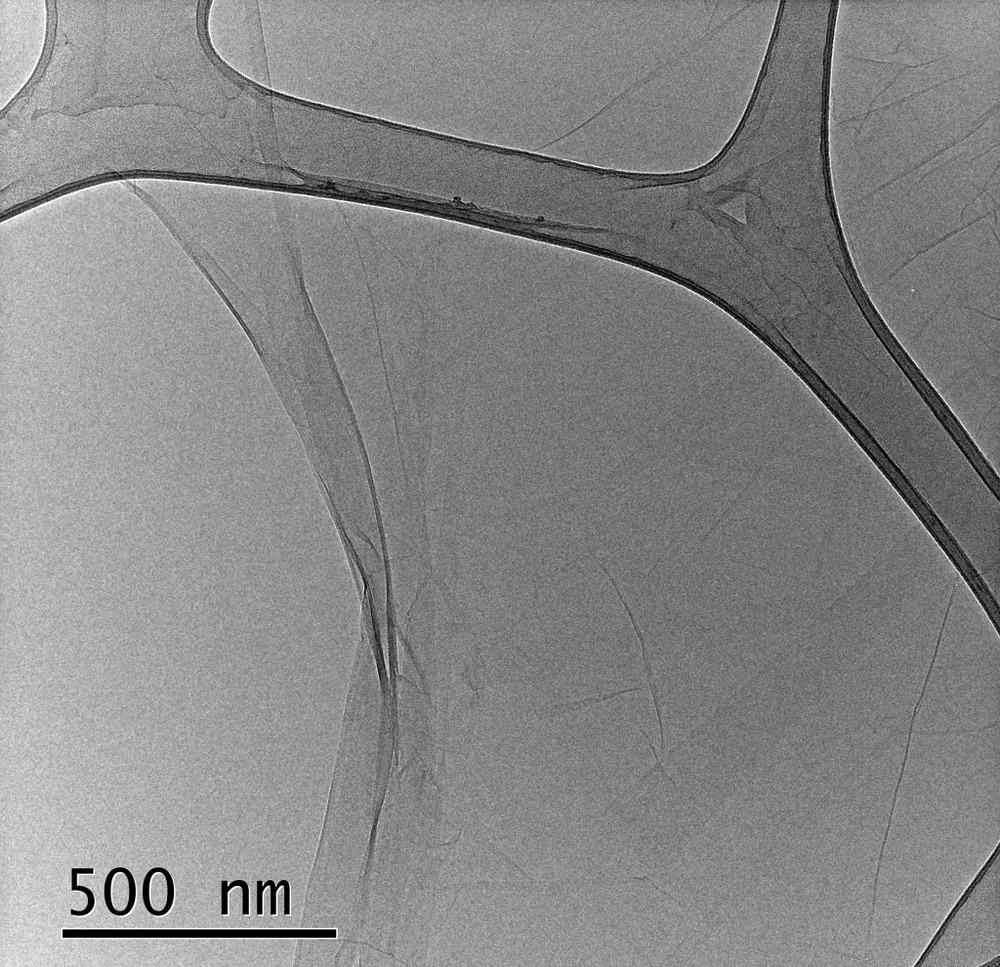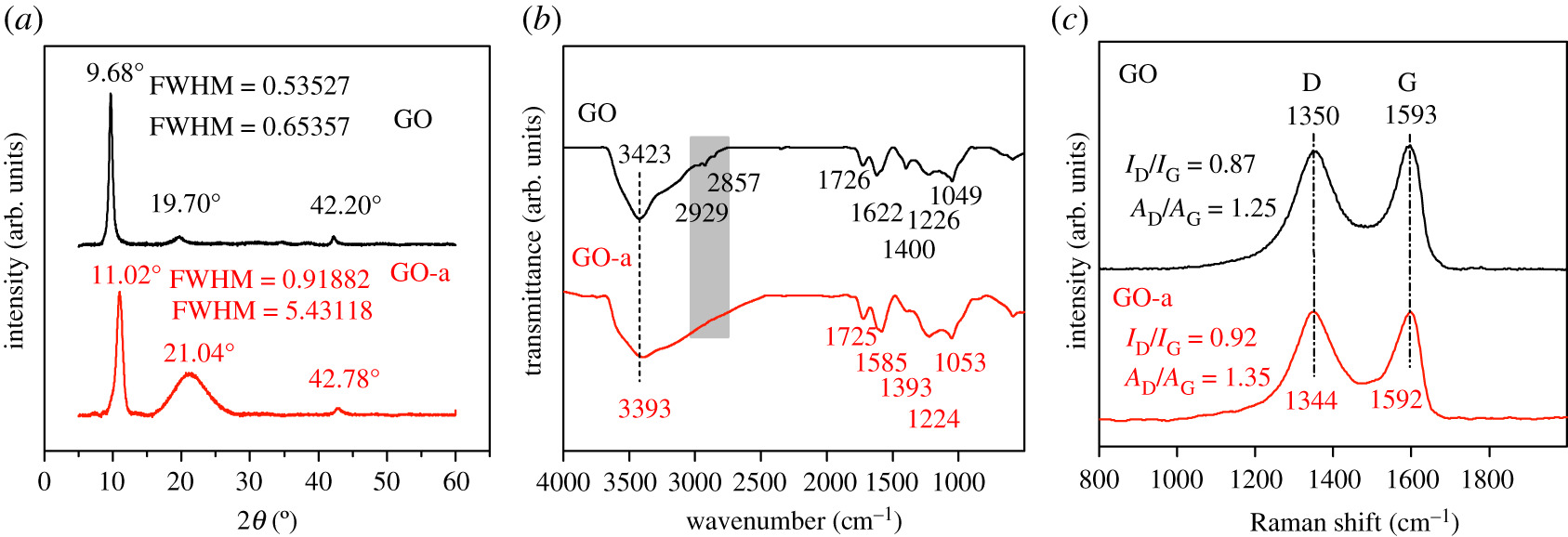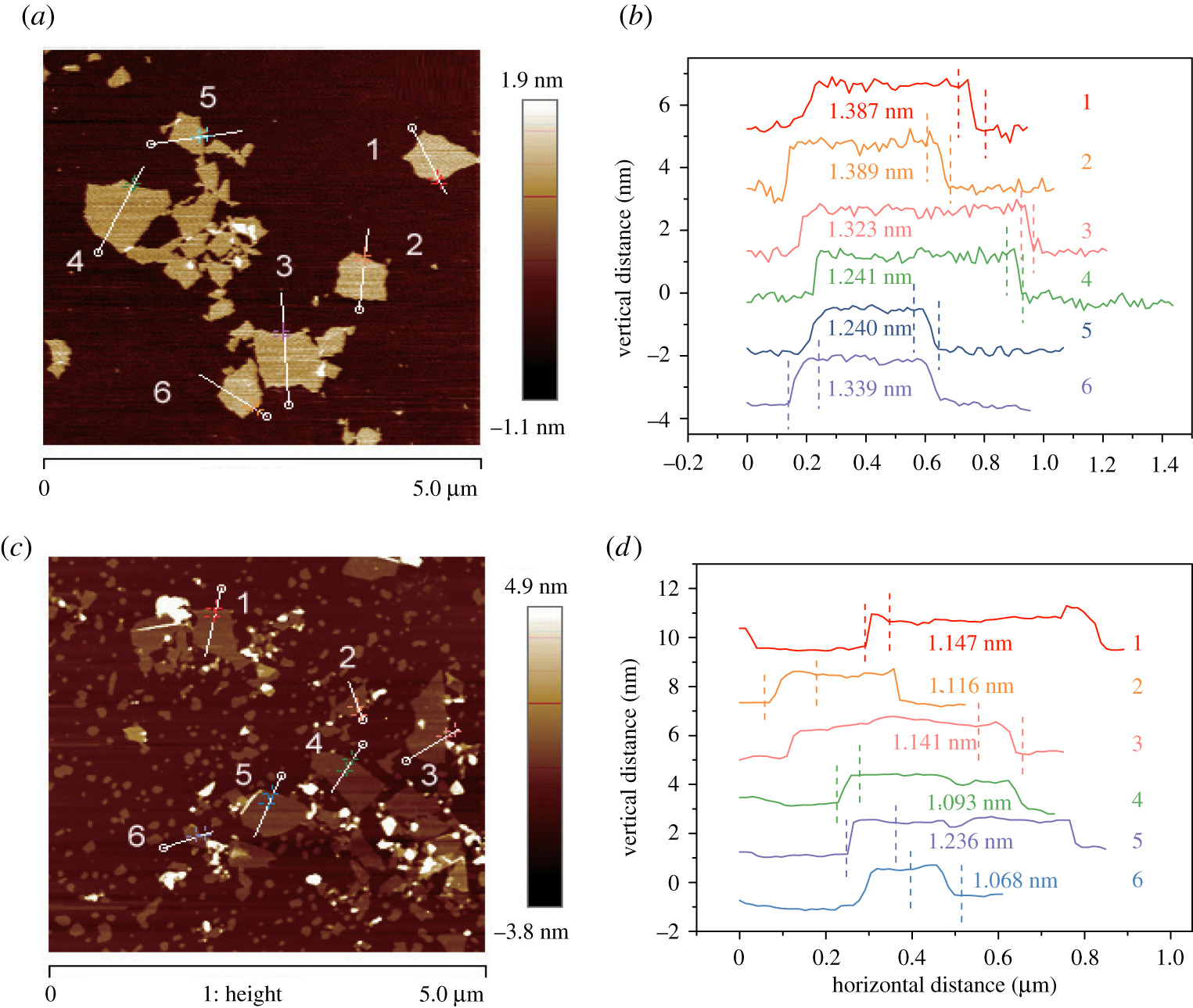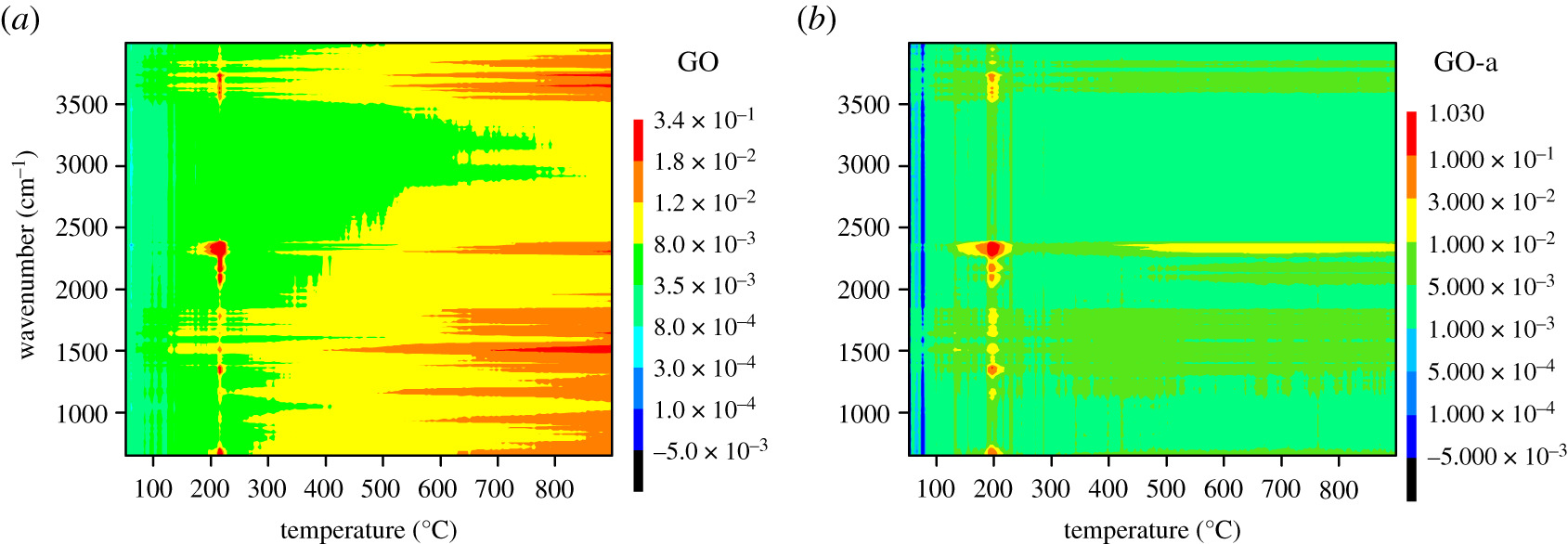Graphene oxide is a commercially important material that has been explored for use in several industries. A paper published in the Royal Society Open Science journal has investigated the effects of long-term aging on this material.

Study: Effect of long-term ageing on graphene oxide: structure and thermal decomposition. Image Credit: Daniel Ramirez-Gonzalez/Shutterstock.com
Graphene Oxide: Overview, Uses, and Challenges
Graphene oxide is a thermally unstable, high-energy material. The material is a derivative of graphene, possessing a six-carbon ring structure. Active groups attached to the structure facilitate interaction with other substances. Even under mild heating conditions, it can react disproportionately. Even at room temperature it can react and begins to decompose at around 50 oC.

(a) XRD, (b) FTIR and (c) Raman curves of graphene oxide prepared after 5 days (GO; black) and graphene oxide aged for 2 years (GO-a; red). Image Credit: Li. C et al., Royal Society Open Science
One of the main proposed uses of graphene oxide is the preparation of energetic materials and energetic composites, which are commonly used in pyrotechnics and ammunition which can be stored for extended periods of time. The large specific surface area of graphene oxide facilitates its combination with other functional materials to manufacture composites, along with the presence of active groups such as hydroxyls and carboxyls.
There have been numerous studies in recent years on manufacturing energetic materials and composite energetic materials using graphene oxide. However, the material’s thermal instability along with the tendency of graphene oxide to absorb moisture due to its large specific surface area presents challenges. Graphene oxide’s properties may change over time, presenting further challenges for the long-term storage of energetic materials and their performance.

AFM images of graphene oxide prepared after 5 days (GO) and graphene oxide aged for 2 years (GO-a). The topography of graphene oxide: (a) GO and (c) GO-a. Interlayer spacing of graphene oxide: (b) GO and (d) GO-a. Image Credit: Li. C et al., Royal Society Open Science
Studying the Influence of Ageing on Graphene Oxide
For this reason, recent studies have sought to elucidate information on the influence of aging on graphene oxide's thermal decomposition and structural properties. One study by Iakunkov et al. has examined graphene oxide's swelling properties after aging in media such as water, air, and industrial alcohols. Yin et al. reported aging slightly reduce the initial temperature of decomposition, but the decomposition enthalpy is not significantly affected.
Zhou & Bongiorno investigated the effects of aging on the graphene oxide-based material’s dynamic, chemical, and structural stability. Whilst these studies have examined various effects of aging, the authors of the study published on The Royal Society’s website have stated that there are no reports on the long-term aging effects on graphene oxide’s thermal decomposition and structure.
Whilst long-term aging is a tedious process, the method can provide pertinent information that more accurately reflects the real-world use of graphene oxide. The study published on The Royal Society’s website has concentrated on this research perspective.
The prepared graphene oxide in the study was stored for 2 years in a box with constant humidity and temperature. Humidity was kept between 20-70% and the temperature was maintained at 25 oC. The 2-year-old prepared graphene oxide was compared to newly prepared graphene oxide to elucidate the effects of long-term aging. Materials were characterized by analytical techniques such as X-ray diffraction.
The long-term aged graphene oxide structure was demonstrated to have undergone several changes, including reduced layer spacing caused by the desorption of adsorbed water and part of the material’s oxygen-containing groups. Additionally, peak intensity and diffraction peak width considerably increased in the 2-year-aged sample. Other analytical results demonstrated that CH2 and CH3 were degraded over time.
Experimental observations demonstrated that graphene oxides' lower decomposition temperature limits its application when exposed to high temperatures (at around 195 oC, the material violently decomposes) which calls for storage away from elevated temperatures. Exposure to moisture decreases graphene oxide’s activation energy. Additionally, when stored for extended periods at room temperature, graphene oxide’s structure undergoes slow changes, which causes changes in chemical and physical properties.
Additionally, the study found that light can affect graphene oxide’s decomposition. The results of the study demonstrate the need for proper storage of graphene oxide in dry, dark, and low-temperature conditions. This will ensure that the product remains stable during long-term storage and use.

Contour plots of the infrared absorption spectrum of gaseous products of (a) graphene oxide prepared after 5 days (GO) and (b) graphene oxide aged for 2 years (GO-a). Image Credit: Li. C et al., Royal Society Open Science
The Future
As graphene oxide ages, several changes occur which affect its stability and physical and chemical properties. Whilst there have been plenty of studies on aging factors, until now, there has been a lack of literature on long-term aging and its effects on the material. The study published on The Royal Society has demonstrated the effects of extended storage on graphene oxide which will provide a knowledge base for future research.
The authors conclude that, past a certain time limit, the negative effects of aging may interfere with the material’s ability to meet the needs of users. By testing the material under real-world conditions, the authors have provided important information for the field.
Further Reading
Li. C et al. (2021) Effect of long-term ageing on graphene oxide: structure and thermal decomposition [online] Royal Society Open Science | royalsocietypublishing.org. Available at: https://royalsocietypublishing.org/doi/full/10.1098/rsos.202309
Disclaimer: The views expressed here are those of the author expressed in their private capacity and do not necessarily represent the views of AZoM.com Limited T/A AZoNetwork the owner and operator of this website. This disclaimer forms part of the Terms and conditions of use of this website.